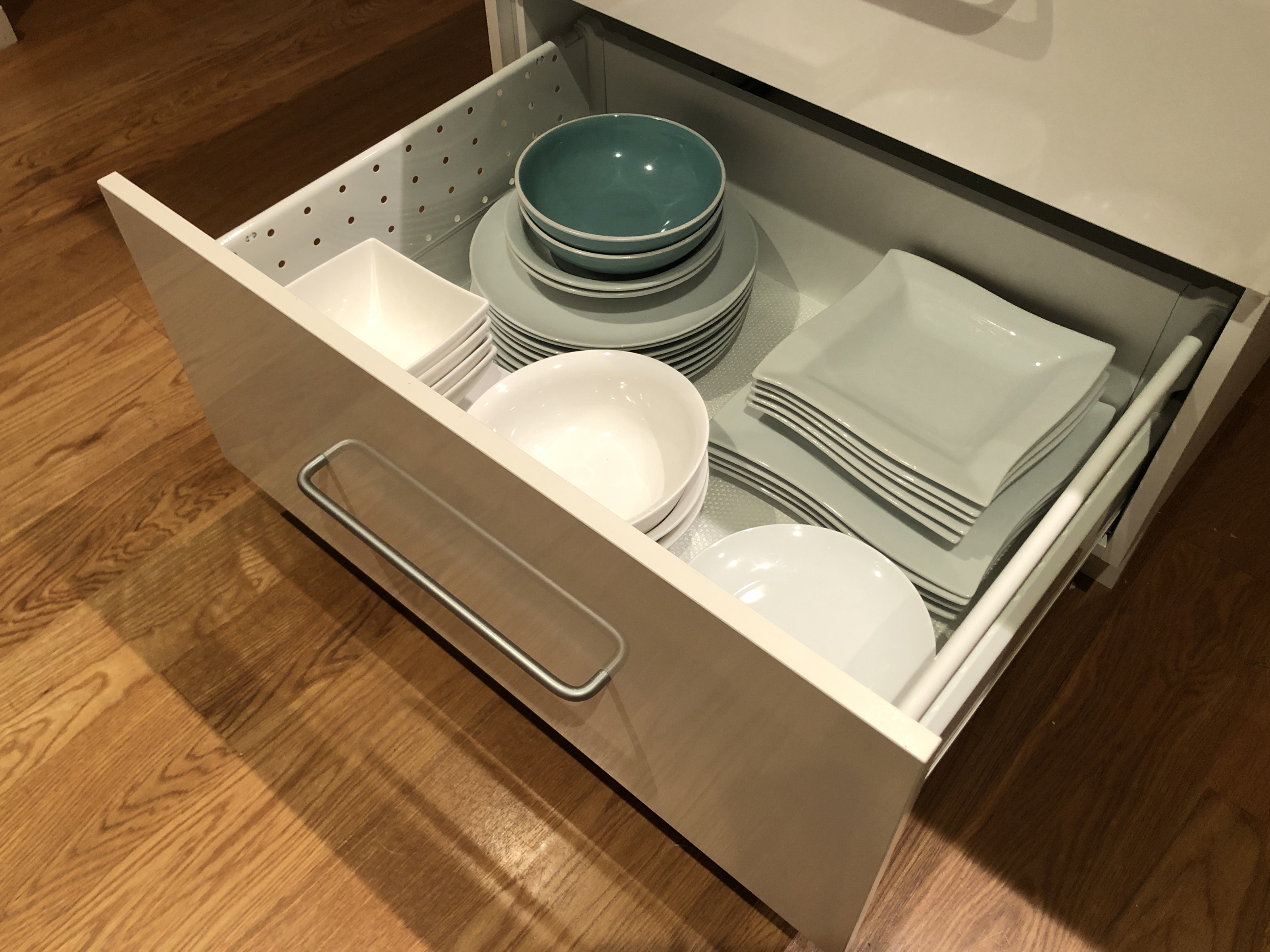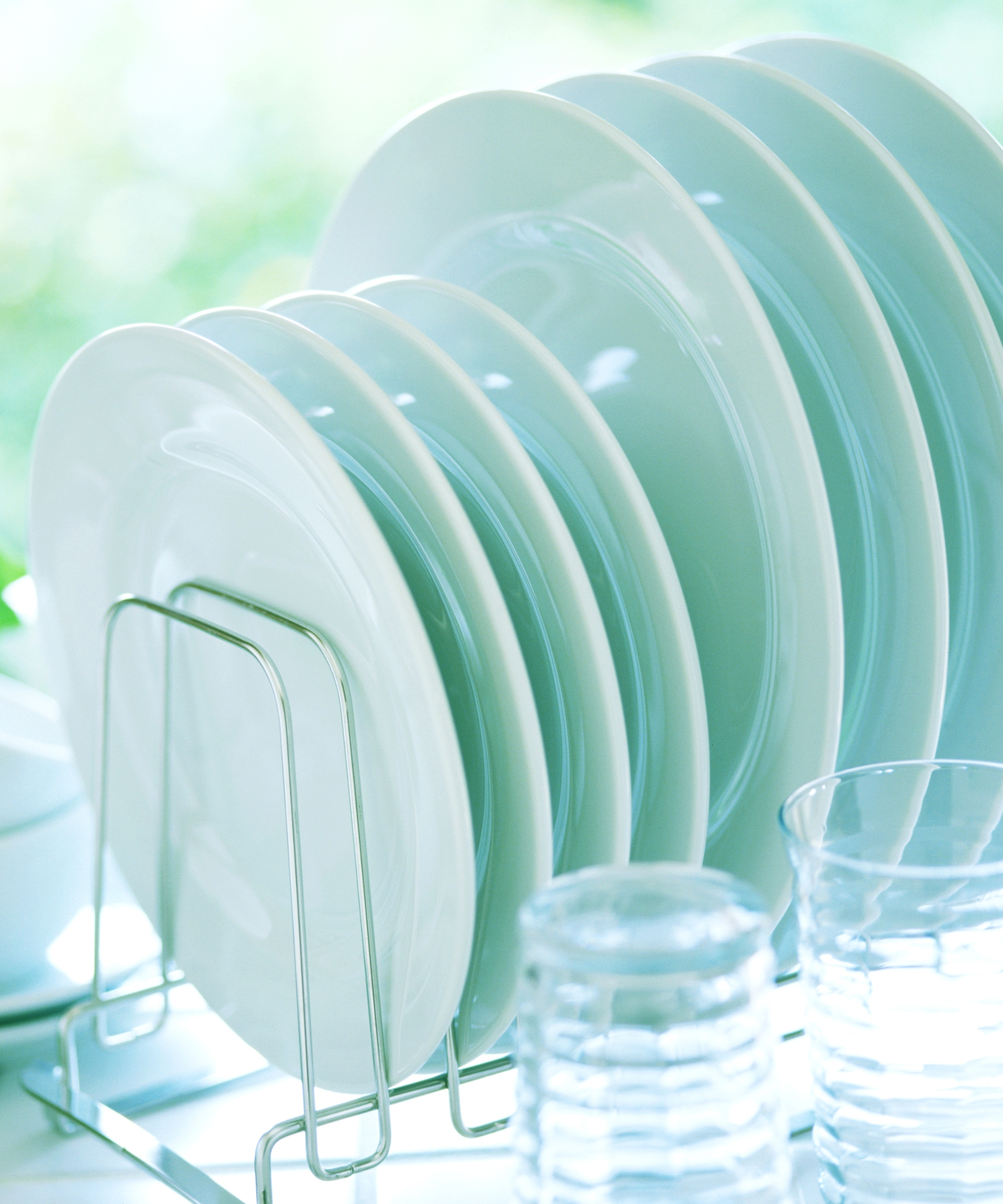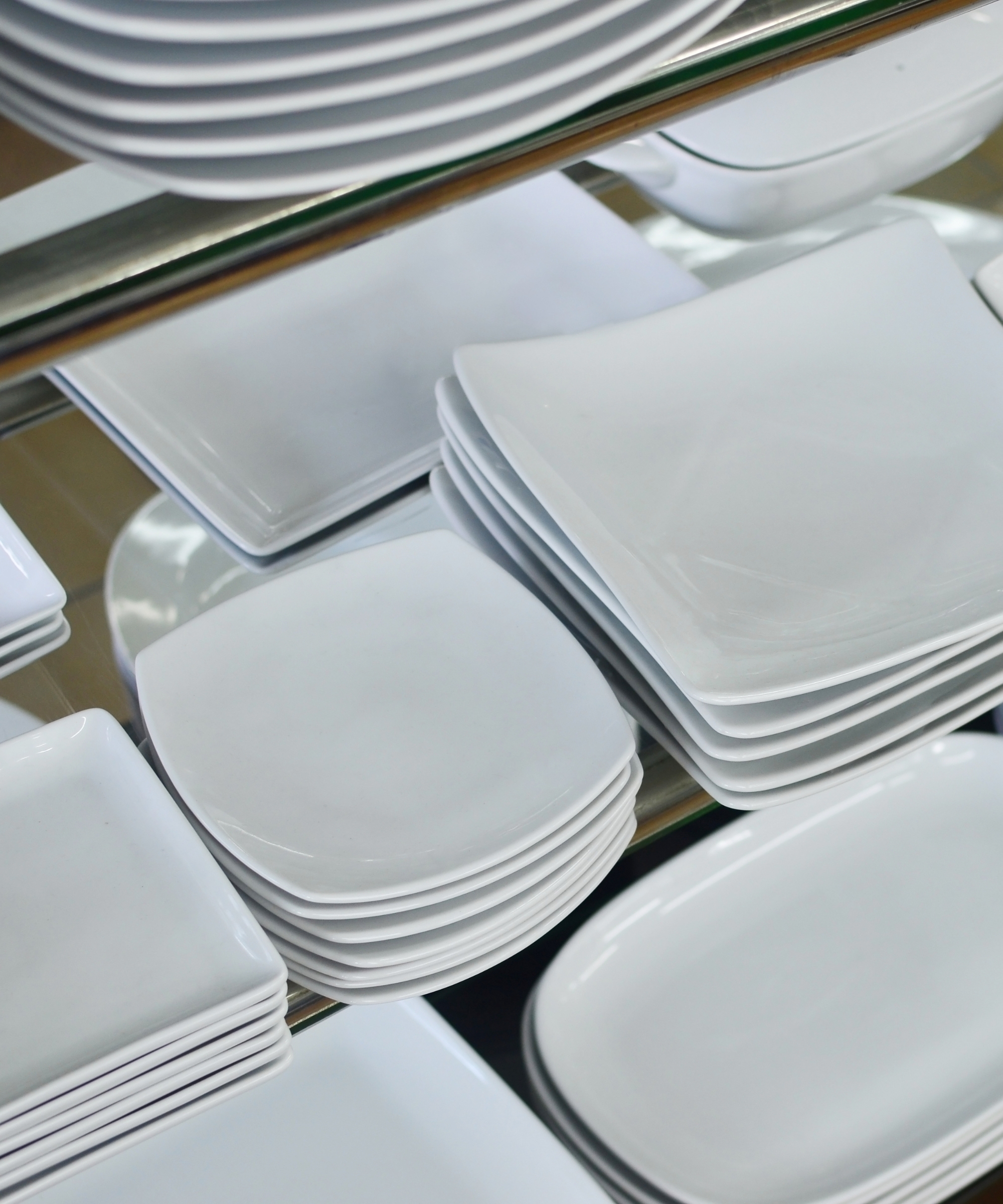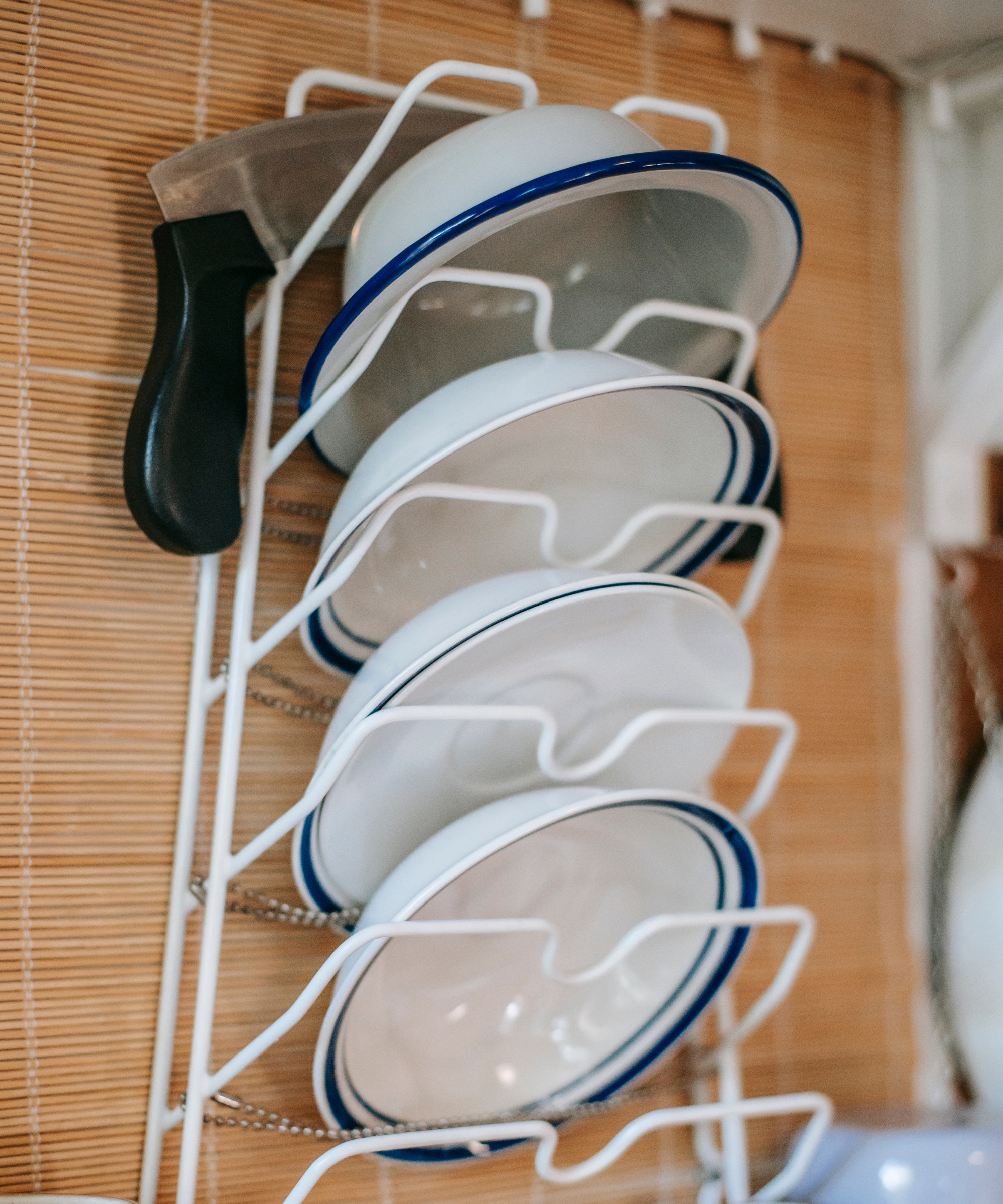
You know it’s time to figure out how to organize plates in a small kitchen when your shelves and cabinets are in utter, dish-clattering disarray.
Plates tend to build up really quickly; one minute you’re bobbing along fine with a couple of plates and empty shelves, and the next, your cabinets are overflowing. Our expert organizers have revealed seven tips to get things back in order.
To help you keep your plate collection neat and tidy, as well as getting rid of any plates you don’t need (think: chipped, cracked, or old), we’ve spoken to a panel of experts for advice on getting your personal plate-gate sorted, and organizing a small kitchen.
How to organize plates in a small kitchen
When organizing a small kitchen quickly and getting the crockery in order, cleaning expert, Karina Toner explains, “Little kitchens demand a strategic approach to plate organization,” compared to their larger counterparts.
1. Start with a clear-out

As with most small kitchen organizing tasks, start with a clear-out. Amanda Liford, professional organizer and clutter master, says, “The first tip is to downsize. The fewer plates you have, the easier it will be, and you may not even need to buy special products to make it organized.”
Jean Prominski, certified professional organizer adds, “In a small kitchen, you don’t have the luxury of having too much stuff," and storing plates and cookware in a small kitchen can be more challenging.
If you’re struggling to choose what to keep or throw away, Jean has a simple hack. “Get rid of the ones you don’t like or need," she says, advising you keep your best plates and dinnerware.
It’s important to assess each plate's functionality and sentimental value. If a plate doesn't spark joy or serve a practical purpose, consider bidding it farewell. Karina adds, "This not only frees up space, but elevates your kitchen aesthetics.”
2. Organize plates by size
Once you’ve decluttered your collection, set about putting them in a sensible order.
Jean advises the best approach. "Organize them by size, separating them into categories, such as side, dinner and larger plates, or whatever works best for you," she says.
Karina agrees and recommends you start by grouping them by size and purpose. "Take the time to assess what you use most frequently, reserving your prime real estate for daily essentials.”
3. Pick thinner plates

If you have a whole host of options to choose from when shopping, go for the thinnest designs.
When constantly battling with a lack of space to store your dinnerware, it can be worth the investment to replace bulky sets with thinner items, as they naturally take up less space vertically and allow you to carve out a few extra inches of storage.
4. Use a plate rack
If you're bored of simply stacking your plates, swap to storing them in a handy rack (such as these stackable plate racks from Amazon) instead.
Jean says, “Depending on how your shelf heights are dispersed, it may make sense to use a plate rack.”
The beauty of these handy little organizing tools is they can be positioned inside your cabinets if there’s space, on counters, open shelving, inside drawers or wall-mounted if using an organizer like this one from Amazon).
5. Show off your favorite plates

If you’re proud of your plate collection or have a set that's bright, bold, and full of color, you might fancy showing them off a little (this wall-mounted plate rack from Pottery Barn would work well for this) whilst taking advantage of vertical storage.
When it comes to displaying plates, Karina advises it’s best to, “Adopt a minimalist mindset, showcasing only the ones that truly resonate with your style.
“Consider open shelving (such as this accent shelf from Wayfair, ideal for storing plates) to turn your items into functional art and adding character to your kitchen.”
6. Be creative with storage
Karina says, “Innovative storage solutions are your secret weapon. Explore pull-out shelves, stackable organizers, and under-shelf baskets to maximize every inch of your cabinet space. Keep smaller plates in check with sleek drawer organizers.”
If you prefer your plates flat, a bamboo corner shelf plate organizer like this from Amazon is a good shout. These sturdy and clever bits of kit are able to hold plates without fear of other items falling over.
Amanda add, “Depending on the size of your plates, I highly recommend this two-piece set of plate holders from Amazon. They allow you to store your plates upright which will take up less space and eliminate the need to unstack plates.”
7. Store seasonal plates elsewhere
If you’re someone who likes to have plates for every occasion and has collected a whole host of decorative seasonal items, store them outside of the kitchen, the same way you would other seasonal decor.
Amanda advises, “If you are in a small kitchen, but enjoy keeping seasonal plates for the holidays or extras for when you have a party, put them into storage.
“These crockery storage containers from Amazon are made for dishware and will fit round or square plates. The padding and felt dividers will also keep your dishes safe.”
FAQs
How can I work out how many plates I need?
Amanda recommends a formula to find how many plates you need, first working out the number of days you typically go between doing dishes, multiplied by the number of family members, with the final number being multiplied one and a half times.
“If dishes are done once a day and three people live in the house, you would work out: 1 x 3 x 1.5= 4.5, which would mean I would recommend keeping 4-5 of each size plate," she explains.
Now you've nailed rifling through, ditching, keeping and organizing the plates in yuor small kitchen, you'll hopefully be in the zone to keep going. There are so many clever storage solutions to be utilized in this space, and we've delved into everything from in-cabinet racks, to organizing your kitchen shelves and using them to display your plates on.







